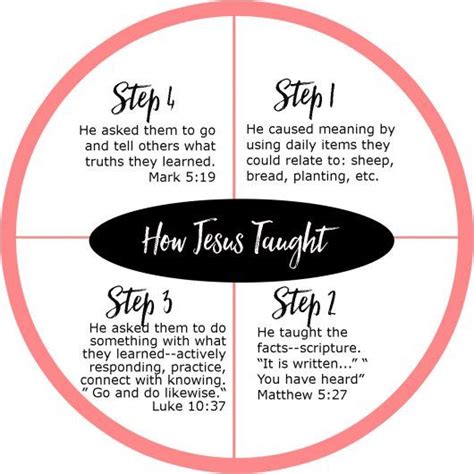How To Teach Bible Study
Ronan Farrow
Mar 20, 2025 · 3 min read

Table of Contents
How to Teach a Captivating and Engaging Bible Study
Teaching a Bible study can be incredibly rewarding, but it also requires careful planning and execution. Whether you're leading a small group, a Sunday school class, or a larger congregation, these tips will help you create a dynamic and impactful learning experience.
I. Preparation is Key: Laying the Foundation for Success
Before you even think about opening your Bible, thorough preparation is crucial. This isn't just about reading the text; it's about understanding its context, identifying key themes, and anticipating potential questions.
A. Know Your Audience: Tailoring Your Approach
Consider the age, background, and spiritual maturity of your students. A Bible study for teenagers will differ significantly from one for senior citizens.
- Age: Younger audiences may need more visual aids and interactive activities. Older audiences might appreciate deeper theological discussions.
- Background: Are they familiar with the Bible? Do they have specific theological viewpoints? Adjust your teaching style accordingly.
- Spiritual Maturity: Beginners need a more foundational approach, while more experienced students may benefit from challenging interpretations and applications.
B. Deep Dive into the Text: Understanding the Context
Don't just skim the passage. Research the historical, cultural, and literary context. Use reputable study Bibles, commentaries, and biblical dictionaries to gain a deeper understanding. Ask yourself:
- Who wrote it?
- When was it written?
- To whom was it written?
- What was the historical context?
- What is the literary genre (e.g., narrative, poetry, prophecy)?
C. Identify Key Themes and Objectives: Setting Clear Goals
What are the main points you want your students to take away from the study? Clearly define your objectives before you begin. This will help you stay focused and ensure you cover the most important aspects of the text.
II. Engaging Your Audience: Making the Study Come Alive
A successful Bible study isn't a lecture; it's a conversation. Engage your students through various methods to foster interaction and deeper understanding.
A. Interactive Teaching Methods: Beyond the Lecture
- Discussion Questions: Prepare thought-provoking questions that encourage participation and critical thinking.
- Group Activities: Use icebreakers, small group discussions, role-playing, or creative projects to reinforce learning.
- Visual Aids: Maps, timelines, images, or videos can bring the Bible to life and make it more accessible.
- Guest Speakers: Invite someone with relevant expertise to share their insights.
B. Facilitate Discussion: Guiding the Conversation
Your role is to guide the discussion, not to dominate it. Encourage everyone to participate, respectfully address different viewpoints, and ensure everyone feels heard.
C. Application and Personal Reflection: Connecting to Daily Life
Help your students connect the biblical text to their daily lives. How can they apply the lessons learned to their relationships, work, and spiritual growth? Encourage personal reflection and journaling.
III. Creating a Supportive and Welcoming Environment: Fostering Growth
A positive and encouraging environment is crucial for a successful Bible study.
A. Build Relationships: Creating a Sense of Community
Take the time to get to know your students. Create a safe space where they feel comfortable sharing their thoughts and feelings. Foster a sense of community and support among the participants.
B. Respectful Dialogue: Valuing Diverse Perspectives
Encourage respectful dialogue, even when opinions differ. Remember that the goal is to learn and grow together, not to win arguments.
C. Prayer and Reflection: Connecting with God
Include prayer and time for personal reflection throughout the study. This will help create a spiritual atmosphere and connect the learning to a deeper relationship with God.
By following these guidelines, you can create a Bible study that is engaging, insightful, and deeply impactful for your students. Remember to be prepared, be interactive, and create a welcoming environment, and you'll be well on your way to leading a successful and rewarding Bible study.
Featured Posts
Also read the following articles
| Article Title | Date |
|---|---|
| Chevy Traverse Seats How Many | Mar 20, 2025 |
| Dani Diaz How To Be Cool | Mar 20, 2025 |
| How Can You Tell If A Pool Table Is Slate | Mar 20, 2025 |
| How To Teach Ch | Mar 20, 2025 |
| How To Wire A Relay For A Horn | Mar 20, 2025 |
Latest Posts
Thank you for visiting our website which covers about How To Teach Bible Study . We hope the information provided has been useful to you. Feel free to contact us if you have any questions or need further assistance. See you next time and don't miss to bookmark.
